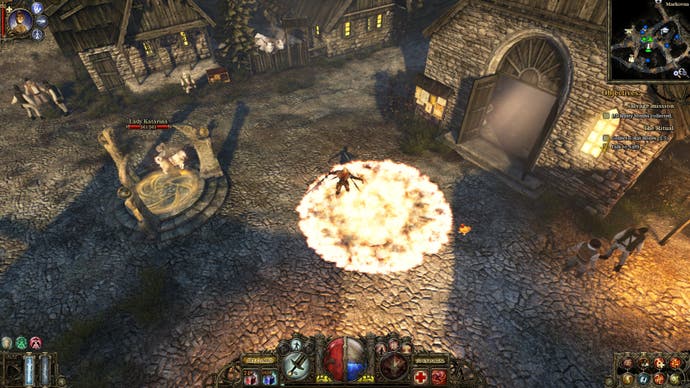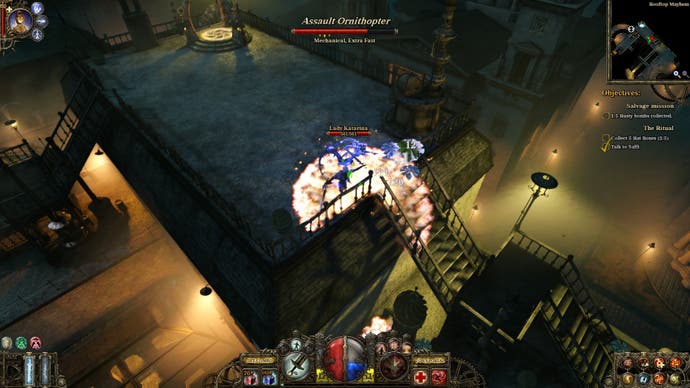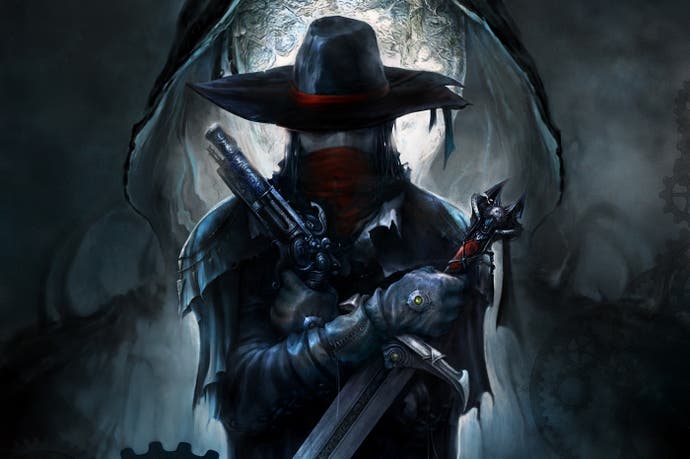The Incredible Adventures of Van Helsing review
The monster mash.
Van Helsing's a smart choice as the protagonist of an action-RPG, I think. He's got a certain derring-do swagger to him, he can be decked out with swords, pistols and a little bit of magic, and he's famous for chewing his way through everything from werewolves and zombies to full-blown vampires. If it moves and it's mythical, Van Helsing wants to kill it. Also, he generally comes with a cool hat - and we all know how people feel about hats.
More specifically, he's a smart choice for a team making an ARPG on a limited budget: his iconic stature gives you a semi-legitimate reason to only offer a single class, and his name brings a bit of headliner clout while ensuring that his ensuing adventures, no matter how incredible, will be gloriously free from any kind of copyright nonsense. Little wonder Hungarian developer Neocore jumped all over him for this charming, limited, and sometimes rather threadbare offering.
For the most part, The Incredible Adventures of Van Helsing plays the ARPG game straight: you've got that famous Diablo view of the battlefield, those famous Diablo orbs of red and blue for health and mana, and you've got thousands of enemies swarming around you as you explore a series of overworld forests and swamps and city rooftops before diving down into a handful of dungeons. The story's pretty forgettable - there's a bad guy somewhere, and you should probably go and sort him out - but the aesthetic is gloomy Cthulhian steampunk. Werewolves come bristling with electrical plates and rivets; soldiers take aim with Tesla-rifles. Tentacles flap and horrible toads leap, yet by the time you reach the final boss, you're stepping over power cables and taking out tripod machine gun turrets with each blow. Van Helsing does a surprisingly good job of capturing a weird world at a point of transition.

Moment-to-moment, the action's as mindless and as worryingly entertaining as these sorts of games can be. It's not hard to tell why there's always a hint of guilty pleasure lurking nearby as you click your way through an ARPG, levelling in sync with your enemies, picking over endless spoils, and spamming your health potion button when you're cornered. The hordes come thick and fast here, the quests are eager to send you to every edge of the handful of maps, and while the environments are often a little underwhelming in both themes and colour palettes, the loot you'll find is surprisingly good. Van Helsing can switch between ranged and melee attacks at the press of a button so I was upgrading both swords and guns pretty merrily until the very end of the game, and I even found a lovely gas mask to wear when I tired of the selection of perk-riddled homburgs, stetsons, and bowler hats on offer. Van Helsing in a gas mask! Somewhere out there, a tattoo artist just got very excited.
In a nod to the likes of Torchlight, you've got a companion with you who can be levelled into dealing the kind of damage you want her to deal, and can even go back to town to sell loot and return with provisions. She's a ghostly member of the nobility, and she provides the adorably leaden script with its few moments of genuine wit, while her severed head, floating a few inches above her neck and shoulders, ensures that the Hammer Horror tone to proceedings is never in doubt.

The long game, though, isn't quite as good as the low-level clicking. With only one class available, Van Helsing's skill trees have to cover a wide variety of play styles, which mean that they lack the focused flavour you get with games like Diablo or Torchlight. They're a bit of a mess, too, with a variety of very similar sounding abilities sprawled awkwardly across a series of pages, while the control scheme seems intent on having you ignore the regular sweep of hot key load-outs as much as possible in favour of picking one or two core attacks to focus on and then tweaking them with a series of power-ups.
These power-ups are triggered by cashing in rage, which you build by dealing damage. The system allows you to take your basic area of attack fire spell, say, and turn it into something that burns longer or reaches further, perhaps, or to fiddle with the way your energy beam works. But if you love those glissando moments as you run your finger across the number keys when cornered and then sit back to watch the fireworks, Van Helsing's not really interested in the same things. Skill-swapping via the F keys is more than possible, but the focus of the system clearly lies elsewhere. This is a nice point of differentiation, but chances are you'll play through most of the game leaning on a couple of skills, levelled to the max. It seems like a waste.
Still, at least there are perks to unlock as your reputation increases, and at least there's a weird sojourn into tower defence once you're deep into the campaign and starting to deck out Van Helsing's lair with a series of traps that help confound hordes of incoming nasties. As these gadgets spring and chatter, as enemy waves advance, and as you steer Van Helsing around the maze tackling the worst of the approaching menace when it bunches and swarms, there's a distinct sense that you're seeing a game that's about one or two iterations away from real cleverness. The basic pieces are in place for an entertaining hybrid, but the idea feels too throwaway at present, coming off as a laudable alternative to an end-of-act boss fight rather than something more substantial.

This element, then, along with the muddled skills, the multiplayer option (which I still can't get to work properly) and a handful of glitches and all-out crashes that punctuated my hacking and slashing, are presumably things that can be fixed for the sequel - and a sequel has, weirdly enough, already been announced. It was announced as I was mid-way through my first Incredible Adventure, in fact, a press release popping up in my in-tray as I lingered in the inventory, debating the merits of two different pairs of boots.
Would I play a sequel? Yes, most likely. Van Helsing isn't a polished game, or even a particularly thoughtful one for most of its campaign, but it has scrappy charm and schlocky character, and it benefits from leaning on one of those design templates that is ultimately really, really difficult to screw up too badly.

